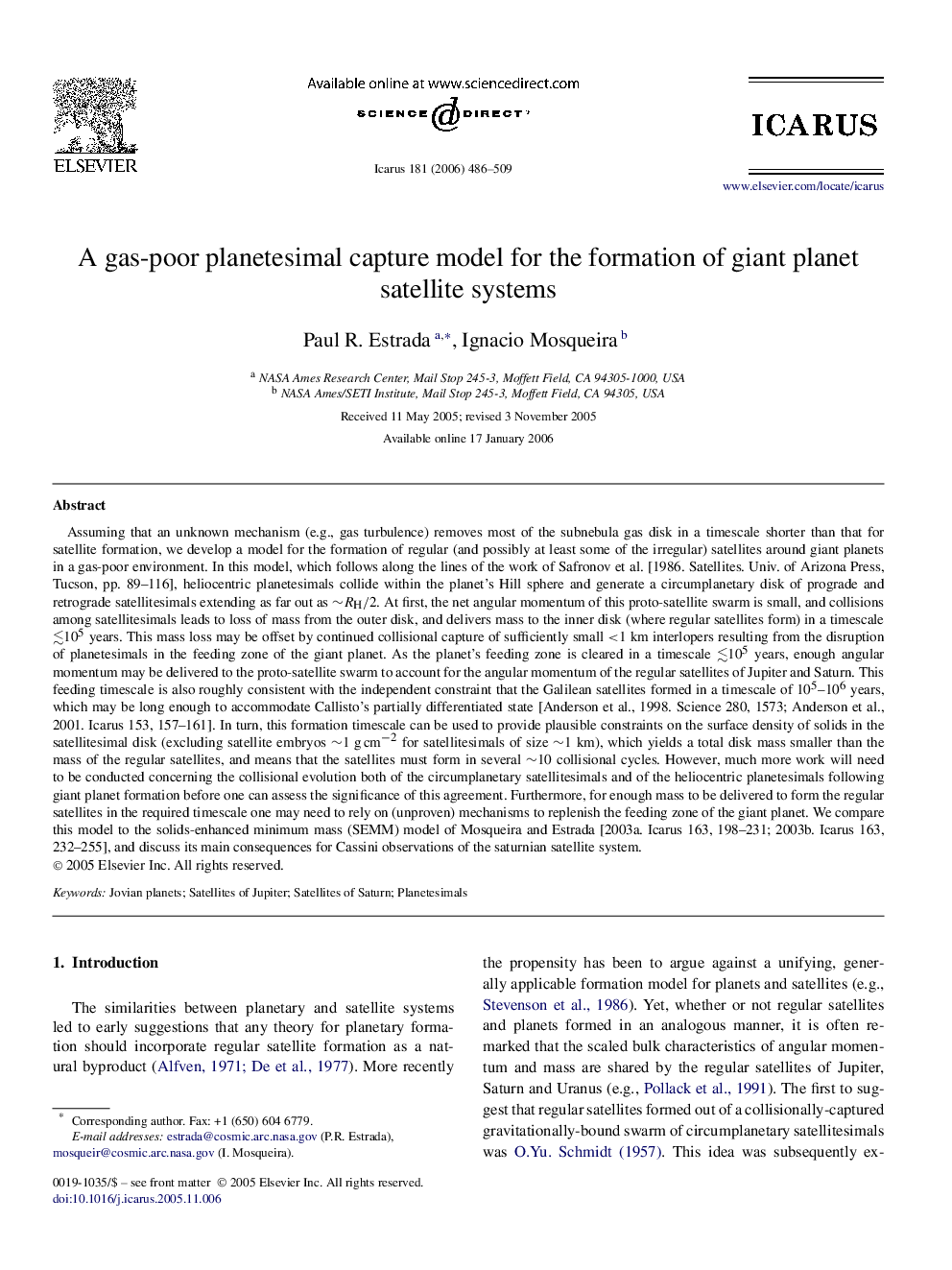| Article ID | Journal | Published Year | Pages | File Type |
|---|---|---|---|---|
| 1775828 | Icarus | 2006 | 24 Pages |
Assuming that an unknown mechanism (e.g., gas turbulence) removes most of the subnebula gas disk in a timescale shorter than that for satellite formation, we develop a model for the formation of regular (and possibly at least some of the irregular) satellites around giant planets in a gas-poor environment. In this model, which follows along the lines of the work of Safronov et al. [1986. Satellites. Univ. of Arizona Press, Tucson, pp. 89–116], heliocentric planetesimals collide within the planet's Hill sphere and generate a circumplanetary disk of prograde and retrograde satellitesimals extending as far out as ∼RH/2∼RH/2. At first, the net angular momentum of this proto-satellite swarm is small, and collisions among satellitesimals leads to loss of mass from the outer disk, and delivers mass to the inner disk (where regular satellites form) in a timescale ≲105 years≲105 years. This mass loss may be offset by continued collisional capture of sufficiently small <1 km<1 km interlopers resulting from the disruption of planetesimals in the feeding zone of the giant planet. As the planet's feeding zone is cleared in a timescale ≲105≲105 years, enough angular momentum may be delivered to the proto-satellite swarm to account for the angular momentum of the regular satellites of Jupiter and Saturn. This feeding timescale is also roughly consistent with the independent constraint that the Galilean satellites formed in a timescale of 105–106 years105–106 years, which may be long enough to accommodate Callisto's partially differentiated state [Anderson et al., 1998. Science 280, 1573; Anderson et al., 2001. Icarus 153, 157–161]. In turn, this formation timescale can be used to provide plausible constraints on the surface density of solids in the satellitesimal disk (excluding satellite embryos ∼1 gcm−2 for satellitesimals of size ∼1 km∼1 km), which yields a total disk mass smaller than the mass of the regular satellites, and means that the satellites must form in several ∼10 collisional cycles. However, much more work will need to be conducted concerning the collisional evolution both of the circumplanetary satellitesimals and of the heliocentric planetesimals following giant planet formation before one can assess the significance of this agreement. Furthermore, for enough mass to be delivered to form the regular satellites in the required timescale one may need to rely on (unproven) mechanisms to replenish the feeding zone of the giant planet. We compare this model to the solids-enhanced minimum mass (SEMM) model of Mosqueira and Estrada [2003a. Icarus 163, 198–231; 2003b. Icarus 163, 232–255], and discuss its main consequences for Cassini observations of the saturnian satellite system.
